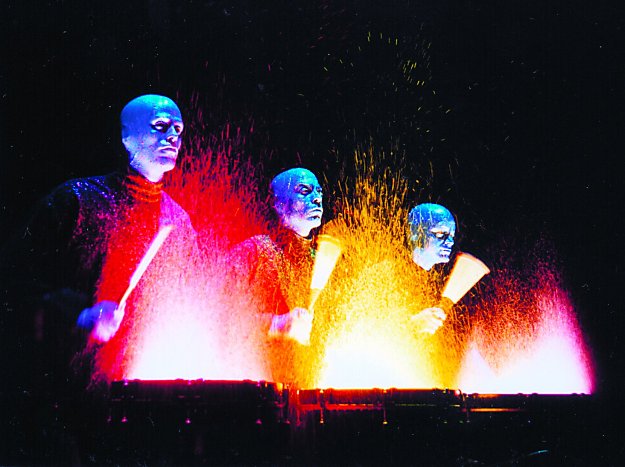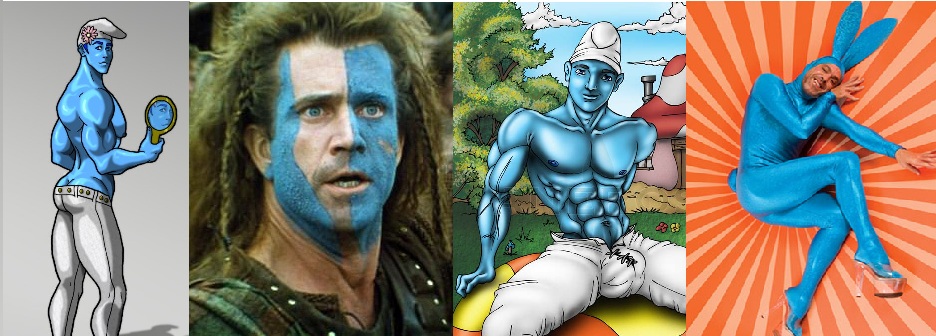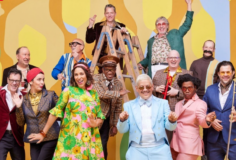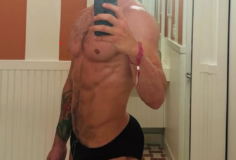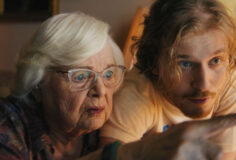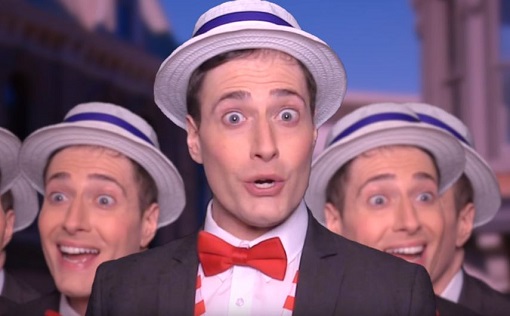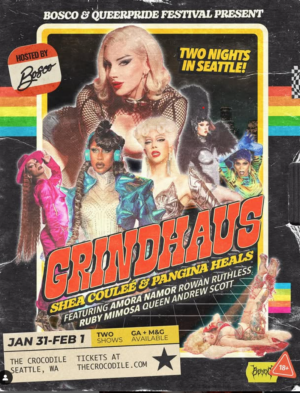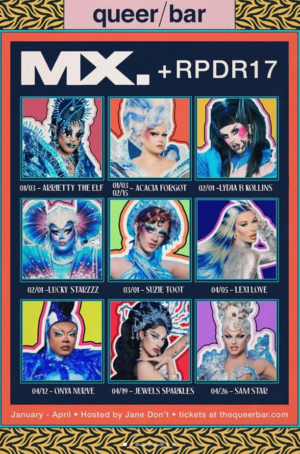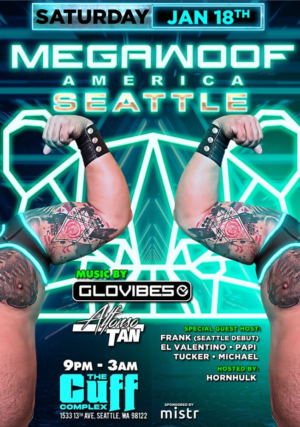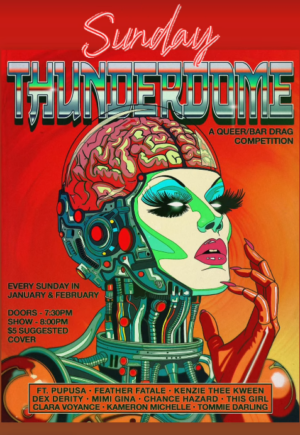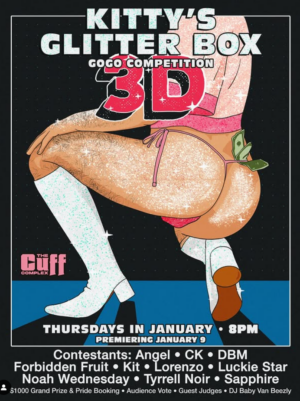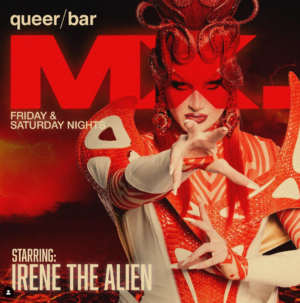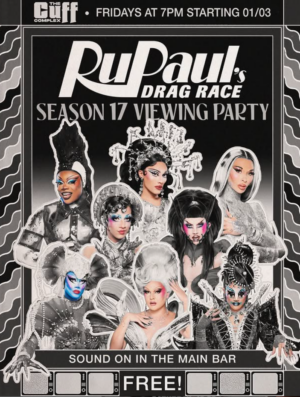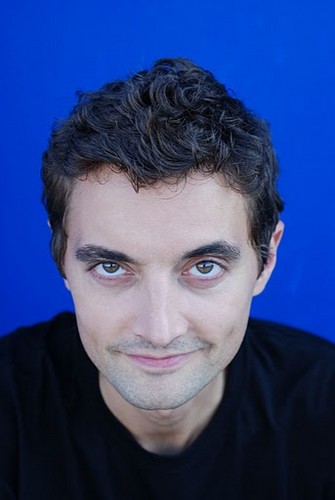
Personally, we feel that Kalen Allmandinger is far more attractive in his natural skin color, than when he's blued up for Blue Man Group. Photo Credit: © Blue Man Group
The planet’s favorite blue theater experience, Blue Man Group returns to Seattle this week for a week long stint at The Paramount and Wes Hurley sat down, (via the telephone) to chat with one of the Blue Men, Kalen Allmandinger about all things in the Blue Man Group universe.
Wes Hurley: For people who have seen other Blue Man shows, how is this show different?
Kalen Allmandinger: This show is the first time that we’ve ever toured with our theatrical show. It’s based on our shows that exist in New York, Chicago and all the other places. When we toured in the past it has been more of a concert experience – basically a song, after song, after song. This one is more character driven. In that sense it has the same framework as we have in theatrical productions across the country. But then within that, even if you were to travel to one of the other cities that we perform in, there is still a good amount of n w material specifically written and designed for this tour.
WH: For people whose only knowledge of the Blue Man Group is from Arrested Development, how would you describe the show?
KA: I always trip up on this question. There’s not really a concise answer. Blue Man is a multimedia show. We use a lot of technology. There are high-tech pieces and low-tech pieces. All of it is centered around the Blue Man character, who is sort of…. We use the terms “childlike” and “scientist”. It’s an egoless character who navigates his way through his surroundings, experiencing everything for the first time with a child-like sense of wonder. And because he’s egoless and he’s never seen this stuff before, a lot of unexpected things can happen. He will turn familiar everyday objects into something else, whether it’s a song or a sculpture or a painting. And through all that the goal for the character and for us on stage is to connect with the audience. We are actively seeking that out. We don’t have the forth wall. We are really letting what each individual audience member is giving us influence the direction of the show in a huge way. We’re in it to have everyone just realize that we’re all in the same space and experiencing this one-off unique event, even though as performers we do it every night.
MORE After The Jump…
WH: The original Blue Men no longer perform the show. How much are they still involved creatively in developing new material?
KA: They’re very involved in new material. It’s kind of where they live 100% of the time. When we were putting together this tour, they were at the rehearsals and technical rehearsals. They’re constantly trying to stay relevant and come up with new material. And they have nine productions around the world so they have a lot to keep them occupied.
WH: What Blue Men do is basically crazy performance art. Yet it acquired enough mainstream appeal to become a huge commercial success. Do you think the original Blue Men always intended for their work to become this kind of widely-accessible entertainment product or were they surprised themselves when they made it big?
KA: I think initially it was an accident like a lot of things that catch on. It was about being at the right place at the right time. And what they created spoke to a lot of people for a lot of reasons. I think, for a long time they didn’t have any aspirations of making a whole bunch of money with it or getting it to as many people as possible. For the longest time they were very careful about how they did expand. They opened the show in New York after having produced little performances at different performance art spaces around the city. Eventually they had enough material to put together a longer piece so they thought they would give it a shot. They thought it would run for a couple of weeks. And now they’re still at that same theater where they opened their first show. They actually own the building now. Now twenty years later it is a worldwide thing so the approach has had to change to support this model
WH: Often times, when an artist becomes commercially successful and accepted by the mainstream they are taken less seriously as an artist by other artists. As a performer in the Blue Man Group, have you experienced this sort of reactions?
KA: Yes, absolutely. The more popular something becomes, the more views you will encounter on it and the more resistance. When the group started, they were commenting on modern art and it was something cool that you had to go to New York to see. And as they expanded, they changed the show, they changed as people so the material they are writing, the material they are interested in is different. They have kids now, you know, whatever that does to the equation. And some people will use the term “selling out”. And when money is a part of it that always makes you lose integrity in a lot of people’s eyes. You know, if you’re not starving and if you’re not “us against the machine”, then somehow you’re not legitimate. But the vast majority of people do enjoy our shows and enjoy it exactly for what it is. And it’s not trying to be anything other than what it is.
BLUE MAN GROUP plays October 7 through 16, 2011 at the Paramount Theatre.
For more information: http://stgpresents.org/artists/?artist=1558
Wes Hurley was very happy to interview one of the Blue Men (Kalen Allmandinger) about their upcoming show at The Paramount. Please note that Scotty the Blue Bunny, Mel Gibson and these random sexy gay Smurfs are not a part of the Blue Man Group. We just love these images.


